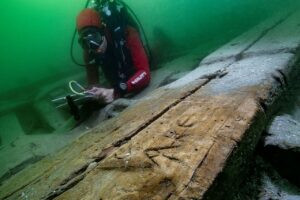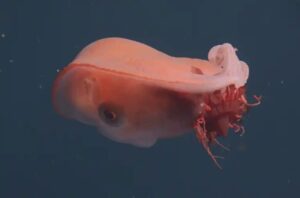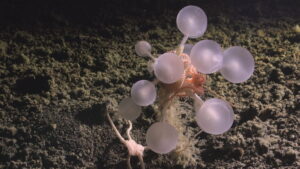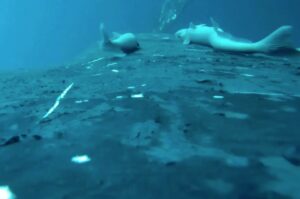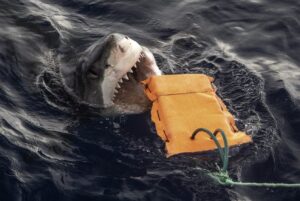For the last few weeks, the Schmidt Ocean Institute has been livestreaming submarine dives off the coast of Argentina. The livestreams feature close-ups of the seafloor and the specimen retrieval process, as well as the scientists’ running commentary. Audiences have thronged to celebrate discoveries such as a plump starfish and a floppy sea cucumber.
Exploring a submarine canyon
The Schmidt Ocean Institute’s remotely operated vehicle (ROV), nicknamed SuBastian, is prowling the bottom of the ocean off the coast of Argentina at a depth of about one kilometer. The target is the rich seafloor of the Mar del Plata Canyon, which sits at the confluence of two oceanic currents. The churning waters support copious life, including many undiscovered species that modern technology can now observe.
Under the leadership of Dr. Daniel Lauretta from the Museo Argentino de Ciencias Naturales Bernardino Rivadavia, the team directs the progress of SuBastian from a research vessel on the surface. An average snapshot of the sea floor includes spiny sea stars, determined aquatic plants, and little flecks of white worms. Even on the bottom of the ocean, the current is so strong that you can see sand flowing past the ROV at all times.

Two fish in apparent conversation were separated when one received a free trip to a surface marine lab. Photo: Schmidt Ocean Institute
More exotic guests regularly make their appearance. On today’s livestream — the final trip in the expedition — the team abducted a hapless fish with a net, vacuumed up a snail, and zoomed its high-definition camera in on coral oases.
Although the sea floor boasts more life than one might expect, it’s around the vibrant red-orange coral that many of the most dramatic scenes occur. Live snails shelter in its folds, and dead ones rest on the seafloor around it. Fish throng. Urchins lurk in the protected inner sanctum. A coral, in the Mar del Plata Canyon, is a city plaza.
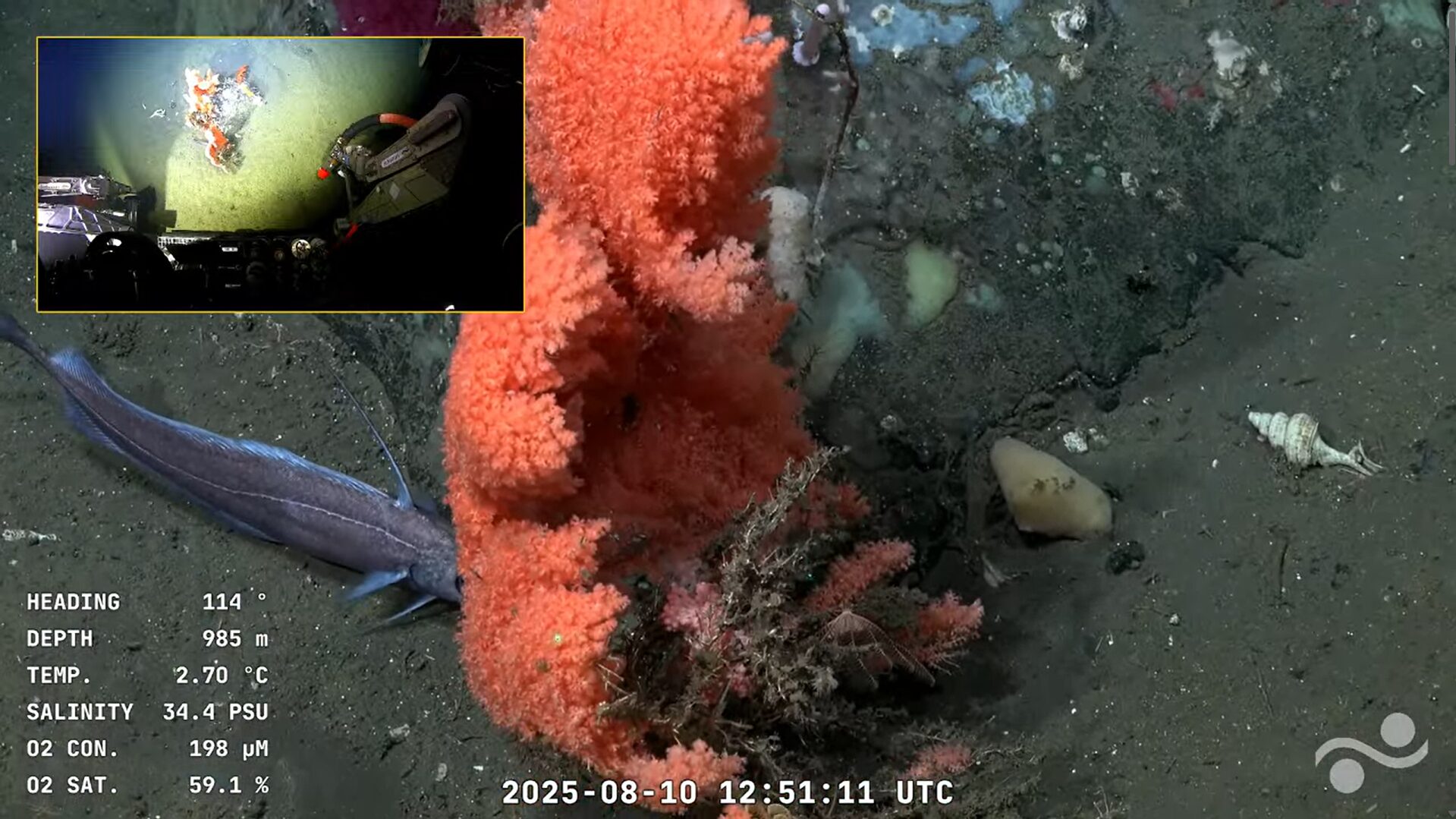
A coral offers an ocean-floor oasis in today’s livestream. Photo: Schmidt Ocean Institute
Big-butt starfish and ‘sweet potato’
Two denizens of the deep, in particular, caught the audience’s attention. The first is a starfish whose anatomy resembles Patrick from SpongeBob.
LiveScience theorized that the appearance of human glutes comes from gravity, since the starfish is stuck to an upright surface. Normally, starfish are radially symmetric, and their anus is actually in the center of their outside flesh.
The chat also nicknamed a sea cucumber batatita, or “little sweet potato.” Unlike the big-butt starfish, this oblong creature found itself on a one-way trip to the surface. According to the team, it’s currently thriving in its laboratory tank.

Sea cucumbers like batatita are a vital part of the marine ecosystem, but face endangerment largely due to overfishing. Photo: Schmidt Ocean Institute
While the expedition is concluding, all the previous livestreams are posted on the Schmidt Ocean Institute’s YouTube page. If you need a morale boost, check out the comment section, where thousands of subscribers cheer on the team. The Argentinian flag is a mainstay, as are cries of “viva la ciencia!”

The commenters cheer on Mike, the ROV operator, as he attempts to retrieve a captured fish.

